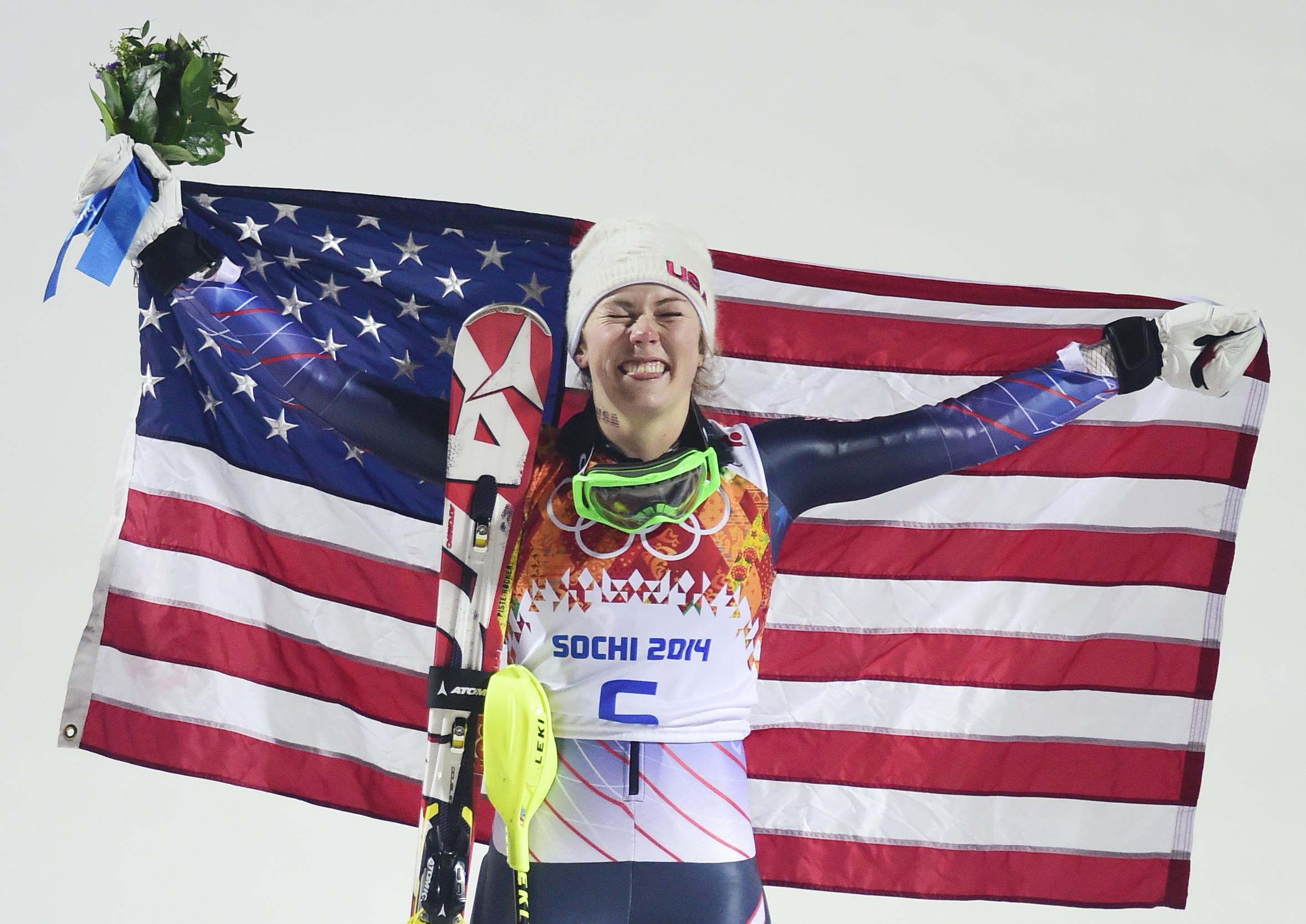Eighteen-year-old American Mikaela Shiffrin won the slalom today in Sochi, making her the youngest gold medalist in the history of that Olympic event. Last year Shiffrin finished atop the World Cup slalom standings, becoming the youngest woman to accomplish that since 1974. As Shira Springer wrote today for the Boston Globe, Shiffrin is the “present and future of US ski racing … a precocious talent who someday could surpass the achievements of Lindsey Vonn.” But “precocious” might not be the best word to describe Shiffrin, whose success isn’t entirely attributable to her innate ability (which, to be clear, is considerable). What’s more interesting is the calculated way that she’s refined her skills.
If you’re a gifted young skier, with an eye toward Olympic competition or the World Cup circuit, chances are you spend a lot of time testing your skills against those of other top young skiers. Someone like Shiffrin can spend all winter going from mountain to mountain, competing in junior-level races organized by the International Ski Federation (FIS). These races let you know how you compare to others your own age, and also whet your appetite for the senior-level competitions to come. In an interview with the Last Magazine in December, Shiffrin talked briefly about the rigors of the junior ski circuit. “Once you’re FIS legal,” she said, “they basically just put you right in it. Most kids are racing 25 to 50 races, and it’s a lot during the season.”
This isn’t necessarily the best way to prepare yourself for world-class competition. Not only are these lower-level races a huge time commitment, they can also cause a young skier to de-emphasize proper technique in favor of winning races that don’t really matter. Even worse, they increase the risk of injury at a young age. Shiffrin’s father, a physician, recently told the Wall Street Journal that “in skiing, the risk of injury is so high that trying to perform at a level you’ve never practiced at is asking for a trip to the O.R.”
So, like a baseball manager limiting a young prospect’s pitch count, the Shiffrins limited their daughter’s racing commitments. While other kids were racing, Shiffrin was taking training runs on her home mountain, “fine-tuning an efficient, no-nonsense skiing style with dogged repetition and a reliance on fundamentals,” as Bill Pennington put it in a 2013 New York Times profile.
Shiffrin also limited herself to a mere two events—the slalom and the giant slalom—and stayed away from the downhill and super-G. While the downhill and super-G are speed events, the slaloms reward technically precise skiing, and technical precision has always been Shiffrin’s game. “In the kitchen of the family home,” wrote Pennington, “Eileen Shiffrin would use broomsticks to simulate slalom gates and have her daughter weave through them trying to learn the intricate rhythm and tempo of hand movements needed to block and push away gates.”
Shiffrin’s story is reminiscent of how Venus and Serena Williams honed their games as children. The Williamses’ father, Richard, kept the sisters out of tournaments and had them practice their strokes against each other, ensuring that when they did make it to tournaments they’d be ready to play. As Matthew Futterman wrote in the Wall Street Journal last year, Shiffrin’s “train-at-home strategy stands apart in a competition-obsessed culture that subjects young soccer players to 100 games a year and budding golfers to every-weekend tournaments.” But maybe it’s a smarter way to go.
We like to think of child prodigies as naturally brilliant, geniuses who emerged fully formed from the womb. But talent isn’t necessarily enough. Shiffrin’s brilliance lies in her preparations and her perspective. She’s Mikaela the machine, finely tuned for optimum performance. And she’s just getting started.
